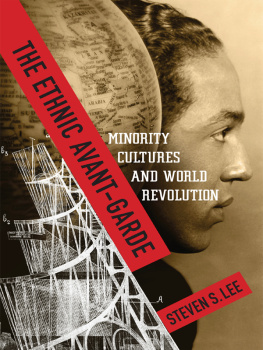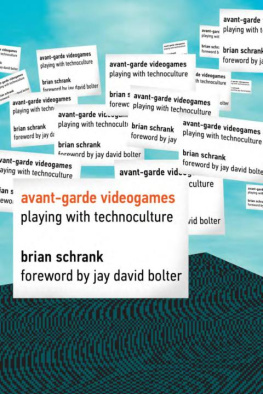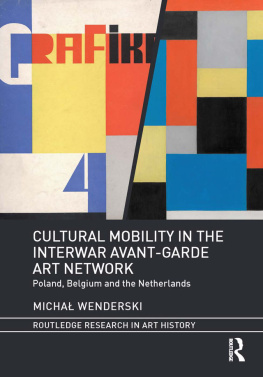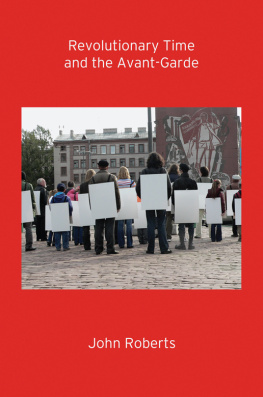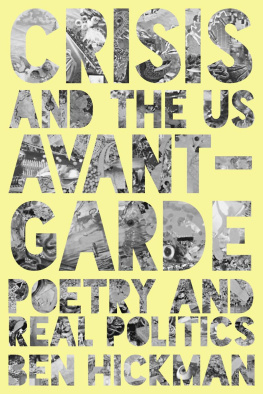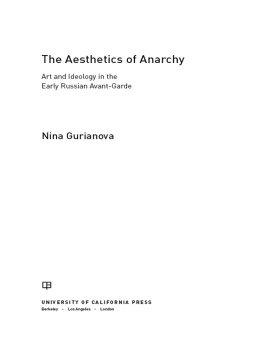The Ethnic Avant-Garde
Modernist Latitudes
Jessica Berman and Paul Saint-Amour, Editors
Modernist Latitudes
JESSICA BERMAN AND PAUL SAINT-AMOUR, EDITORS
Modernist Latitudes aims to capture the energy and ferment of modernist studies by continuing to open up the range of forms, locations, temporalities, and theoretical approaches encompassed by the field. The series celebrates the growing latitude (scope for freedom of action or thought) that this broadening affords scholars of modernism, whether they are investigating little-known works or revisiting canonical ones. Modernist Latitudes will pay particular attention to the texts and contexts of those latitudes (Africa, Latin America, Australia, Asia, Southern Europe, and even the rural United States) that have long been misrecognized as ancillary to the canonical modernisms of the global North.
Barry McCrea, In the Company of Strangers: Family and Narrative in Dickens, Conan Doyle, Joyce, and Proust, 2011
Jessica Berman, Modernist Commitments: Ethics, Politics, and Transnational Modernism, 2011
Jennifer Scappettone, Killing the Moonlight: Modernism in Venice, 2014
Nico Israel, Spirals: The Whirled Image in Twentieth-Century Literature and Art, 2015
Carrie Noland, Voices of Negritude in Modernist Print: Aesthetic Subjectivity, Diaspora, and the Lyric Regime, 2015
The Ethnic Avant-Garde
Minority Cultures and World Revolution
STEVEN S. LEE
Columbia
University
Press
New York
Columbia University Press
Publishers Since 1893
New York Chichester, West Sussex
cup.columbia.edu
Copyright 2015 Columbia University Press
All rights reserved
E-ISBN 978-0-231-54011-7
Library of Congress Cataloging-in-Publication Data
Lee, Steven S. (Steven Sunwoo), 1978
The ethnic avant-garde : minority cultures and world revolution / Steven S. Lee
pages cm. (Modernist latitudes)
Includes bibliographical references and index.
ISBN 978-0-231-17352-0 (cloth : alk. paper) ISBN 978-0-231-54011-7 (ebook)
1. American literatureMinority authorsHistory and criticism. 2. Avant-garde (Aesthetics)United StatesHistory20th century. 3. Avant-garde (Aesthetics)Soviet UnionHistory20th century. 4. American literatureRussian influences. 5. Intercultural communicationUnited StatesHistory20th century. 6. Intercultural communicationSoviet UnionHistory20th century. 7. United StatesRace relationsHistory20th century. 8. Soviet UnionRace relationsHistory20th century. 9. United StatesIntellectual life20th century 10. Soviet UnionIntellectual life19171970. I. Title.
PS153.M56L465 2015
810.9920693dc23
2015017334
A Columbia University Press E-book.
CUP would be pleased to hear about your reading experience with this e-book at .
COVER DESIGN: Mary Ann Smith
PHOTO CREDIT: Getty Images
References to websites (URLs) were accurate at the time of writing.
Neither the author nor Columbia University Press is responsible for URLs that may have expired or changed since the manuscript was prepared.
For my parents
Contents
I n transliterating Russian quotes and citations, I have adhered to the U.S. Library of Congress transliteration system. I have transliterated proper nouns in keeping with this system except in cases where the name has been standardized in English (for example, Mayakovsky rather than Maiakovskii).
T his is a book about minorities drawn to Soviet communism and the avant-garde. The initial focus is the 1920s and early 1930s and the allure of Moscow for the worlds downtrodden and oppressed. The Bolsheviks, it seemed, had eliminated racism in the USSR while supporting anti-imperial struggles around the world. At roughly the same time, a loose grouping of artists and writers sympathetic to the revolutionretrospectively labeled the Soviet avant-gardeemerged at the forefront of modernist experimentation. Through such distinct but overlapping movements as futurism and constructivism, they enacted an unprecedented alignment of political and artistic vanguardsthe artist as bona fide revolutionary.
As indicated by Jacques Derrida after his own 1990 visit, such descriptions can be seen as part of a rich, brief, intense, and dense tradition of Western travelogues casting the USSR as a mythic (ahistoric, in illo tempore) and eschatological (mosaic or messianic) space. However, they were also seeking the creative possibilities opened by the likes of Sergei Eisenstein, Vladimir Mayakovsky, and Vsevolod Meyerholdthis lionized branch of the international avant-garde that, as Slavists well know, had itself long been fascinated by minority and non-Western cultures. From the alignment of art and revolution emerged many striking, eccentric ways of expressing cultural differencevisions of political and artistic vanguardism that deepened rather than erased ethnic particularism; visions of world revolution in which the ethnic Other took the lead. These visions, I argue, enable us to unlock the suppressed utopian potential of minority and avant-garde cultures alikethe former as revolutionary and experimental; the latter as inclusive and decolonizing.
Suffice it to say for now, the historical avant-garde employed montage for the sake of creating new meanings, and this book employs precisely this technique, beginning with the pairing of ethnic and avant-gardethe goal being to estrange and renew both terms. I do so through a new grouping that I call the ethnic avant-garde, which on one level refers simply to the many diverse artists and writersfigures like McKay, Nadir, and Hugheswho were drawn to and often visited interwar Moscow. Through the variety of translations and cultural productions emerging from these encounters, they became active participants in Soviet efforts to transform perception and to decenter the Westin experiments with art and equality that opened radical, forgotten horizons for American ethnic minorities. The ethnic avant-garde encompasses, for instance, Mayakovskys Afro-Cuban poems and Hughess translations of them; Nadirs accounts of the USSR as a red-haired bride; and a Soviet futurist play about China that became Broadways first major production with a predominantly Asian American cast.
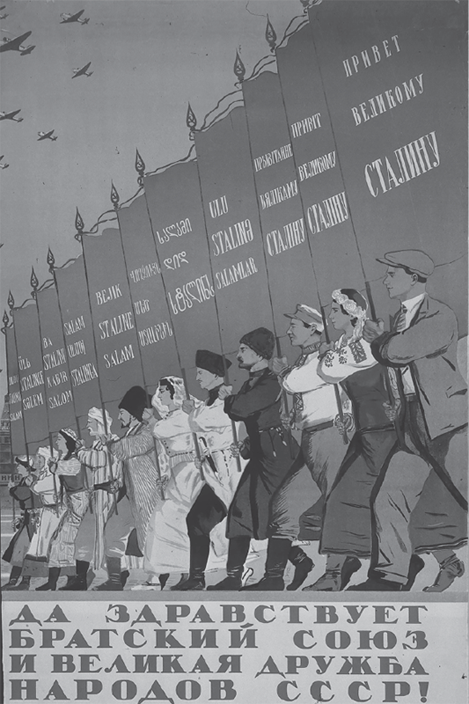
Courtesy of Hoover Institution Library & Archives, Stanford University.
However, beyond these concrete cultural encounters, I also present the ethnic avant-garde as a largely unrealized utopian aspiration, one that ultimately exceeds the Soviet Union of the interwar years. It is the dream of advancing simultaneously ethnic particularism, political radicalism, and artistic experimentation, debunking the notion that particularism yields provincialism. More to the point, though, the ethnic avant-garde foregrounds a distinct way of seeinga transnational optic that, for the contemporary reader, makes it possible to discern unexpected connections among radical artists and writers from many different countries. The figures covered here themselves cultivated such an optic, motivated by the similar potential of avant-garde and minority cultures to level hierarchies and bring art into lifethat is, to shatter or open exclusive canons and to dismantle the divide between high and low. Techniques like cinematic montage enabled not only these ends but also alliances across racial, ethnic, and national lines. Blacks, Jews, Asians, Latinos, and Russians could see themselves as part of a collaborative effort to harness both perceptual estrangement and minority cultures for a Soviet-centered world revolution. Of course, such utopian aspirations were arguably doomed to be suppressed and forgottencrushed by Stalinist terror and overshadowed by socialist realismbut remnants of this interwar ethnic avant-garde nonetheless survive into the present day.

